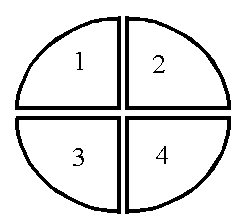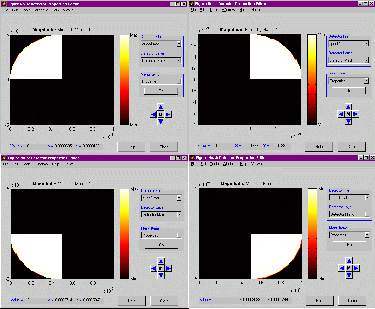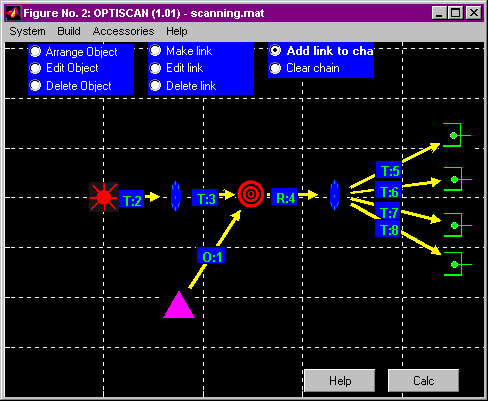Multiple Detector Example
An extremely useful property of the simulated detector object is that it does not modify the field that is incident upon it. That is, if another Optiscan object follows the DETECTOR object in the Optiscan chain, the field incident on the next object WILL NOT HAVE BE MODIFIED by the detector object. In this sense, the detector object acts like the LOOK object in that it does not affect the optical field. This is useful because it allows the user to simulate a detector with more than one output. For example, consider the following quadrant detector:

In this situation, a different current is detected from each of the 4 detector elements that are illuminated. This sort of detector can be simulated in Optiscan by creating 4 separate detectors with the following responsivity patterns:

Each of these detectors is set to generate a separate output file, and is linked into the system as follows:

Because the DETECTOR object does not modify the field, these four simulated detectors physically represent a quadrant detector.

